From tulips to snowdrops, there is a garden for every season and you will find much to inspire at our selection of must-visits through the year.
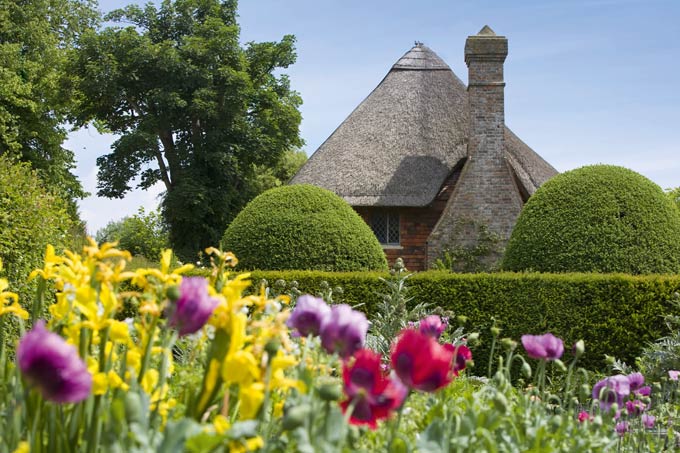
How many kinds of sweet flowers grow in an English country garden?’ asks the classic folk tune. The English pride in their gardens is famed the world over and the country is dotted with growing delights of all kinds, tended by the passionate and green-fingered in the topiaried formality of stately homes, the tumbling colour of cottage gardens and the stark modernity of urban rooftops.
In fact, there are so many types of garden open to visitors that it can be hard to know where to start. From the first building to be acquired by the National Trust, the rare 14th-century Alfriston Clergy House, which is surrounded by a delightful, tranquil cottage garden, to the contemporary interlocking arcs of Sussex Prairies that were started in 2008 from a field, there’s an endless array to choose from. So we’ve done the hard work for you and selected gardens across the country that come into their own with the changing seasons.
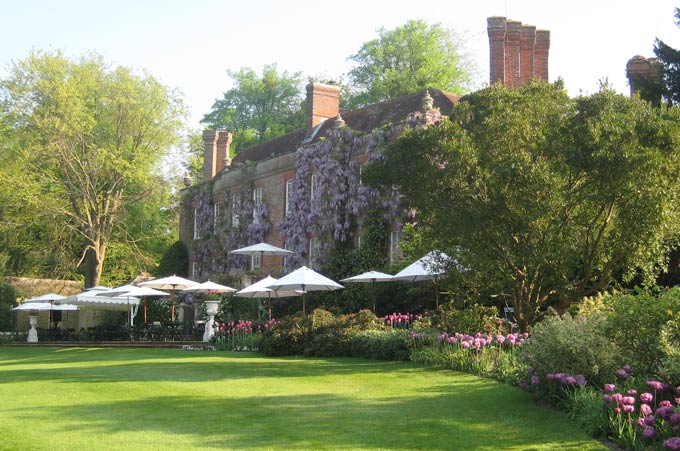
SPRING FEVER (March – May)
We begin our seasonal journey with all the joys of spring when the first buds of colour burst through the frosty soil. Few places present their this season better than romantic Pashley Manor, which is hidden away in a secluded East Sussex valley and carefully tended by owners James and Angela Sellick.
A festival of tulips heralds the 11-acre garden’s opening and towards the end of April more than 20,000 bulbs of 102 varieties, under-planted with scented wallflowers, burst into bloom. Stars include the lily flowered tulip Purple Dream in pots around the swimming pool, and pink and white Huis Ten Bosch teamed with pink forget-me-nots along the pear tree walk.
The fruit trees in the walled garden are covered in blossom in spring, along with the ancient purple wisteria wrapped around the 1550 manor. A selling exhibition of garden sculpture adds more interest, as does an excellent café by the lake. “I want everyone to leave feeling they’ve been as near to paradise as possible,” remarks James Sellick.
The Rothschild banking dynasty never do anything by halves as Exbury Gardens in Hampshire illustrates. In the New Forest, on the banks of the Beaulieu River, the 200-acre woodland garden is home to a world-renowned collection of rhododendrons and azaleas started in the 1920s by Lionel de Rothschild, and now looked after by his grandsons.
Experience an explosion of colour from late April when the Azalea Bowl is a riot of pink and mauve evergreen Japanese azaleas, and the woodland is a carpet of bluebells. By May a colossal collection of 10,000 rhododendrons daubs the garden with rainbow hues. To add to the sheer delight of Exbury, a miniature steam railway, The Rhododendron Line, departs regularly for a 20-minute chug around the garden.
From 1820, generations of the Fox family created Glendurgan – a magical ravine garden that tumbles down to the Helford River, near the coastal town of Falmouth in Cornwall. The dramatic, 30-acre site benefits from a mild, wet climate that allows sub-tropical plants such as tree ferns, gunnera and agaves to thrive.
Glendurgan is especially beautiful in spring. From mid-February around 30 varieties of camellia come into bloom, followed in March by magnolias, and in April and May by rhododendrons. ‘Glendurgan is at its peak in early May, when bluebells, aquilegias and wild flower banks are all in flower,’ says assistant head gardener, Ben Tufnell. The giant tree ferns start to unfurl their new fronds too; some are over 150 years old, having arrived in Falmouth as ship’s ballast before being discarded on the quayside and saved by local people.
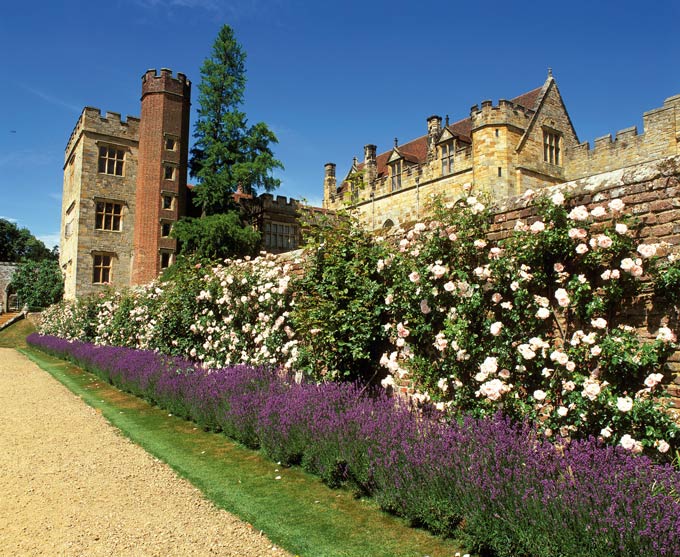
SUMMER GLORY [June – August]
On the edge of Devon’s moody Dartmoor, The Garden House has rich hues and views to sigh for. ‘The beauty of this place is that there’s something different to see every day,’ says the garden’s administrator, Rachel Young. Established in the 1940s by retired Eton schoolteacher, Lionel Fortescue, and developed by a succession of head gardeners, the eight-acre garden is a place to linger.
The cottage garden overlooks the village of Buckland Monachorum and from April to October is a haze of flowers. By midsummer it is awash with colour, from lipstick pink lychnis coronaria to cheery corn marigolds and blue flax. Beyond is a wildflower meadow, speckled with orchids, buttercups and geraniums. The herbaceous borders of the walled garden are an August hotspot.
At the great Jacobean house Audley End parkland melts into the surrounding Essex countryside – the borrowed landscape – thanks to the late 18th century design of Lancelot ‘Capability’ Brown. In summer two features stand out. The first is the restored 1830s parterre, a formal flower garden filled with peonies and shrub roses such as fragrant ‘Ispahan’, followed by cosmos, salvia, pelargonium and scented heliotrope that bloom until the first frosts.
The walled kitchen garden is equally well tended. Gardened organically and bursting with heritage varieties, its four ‘quarters’ are divided by espaliered fruit trees – find 120 types of apple and 40 types of pear. Within the beds grow everything from fennel to pumpkins and strawberries, while grape vines drape the restored vinery.
A medieval gem in the Weald of Kent, Penshurst Place has been home to the Sidney family since 1552. The 11-acre walled garden was laid out in 1580 and is divided into rooms by tall yew hedges. Summer pleasures include an apple and pear orchard, a nut plait, a formal rose garden, and a Union flag garden, which can be seen on the descent to Gatwick airport.
George Carter redesigned the double herbaceous borders in contemporary style for The Queen’s Diamond Jubilee in 2012. The Jubilee Walk is set to inspire for many years to come with its bays of graduating colour, from red, orange and yellow to pink, lavender and blue, interspersed with evergreens and heritage apple trees for structure.

AUTUMN GOLD [September – November]
Near an iconic English landscape, the South Downs, Sussex Prairies in the village of Henfield, West Sussex dares to be different. The six-acre naturalistic garden created by Paul and Pauline McBride in 2008 has had rave reviews for its prairie planting inspired by the Dutch garden designer Piet Oudolf, with whom the couple worked in Luxembourg.
Based on a spiraling shell shape, the border design contains some 30,000 plants of 600 varieties. Drifting across the land are ribbons of colourful perennials – echinacea, verbena bonariensis, asters in early autumn. ‘We use grasses to add architectural splendour,’ explains Pauline. Book onto a garden tour, take plant souvenirs home from the nursery, or go one step further and stay the night at the McBrides’ B&B, with unlimited access to the garden.
“Autumn at Batsford is like an explosion of fireworks!” recounts Matthew Hall, head gardener of the Cotswold arboretum, home to 2,888 trees at the last count. The 56-acre collection was started in the late 19th century by Algernon Mitford, grandfather of the famous Mitford Girls, and is now a charitable foundation.
‘Our liquidambars are the first to colour up in September and the last to drop their leaves,’ says Matthew. Pungent scents waft through the air too – the toffee apple fragrance of Katsura trees, and the rose perfume of a clerodendrum shrub. The last two weeks of October is when the show is at its finest, with maples in fiery colours, and the national collection of Japanese flowering cherry trees sporting brilliant hues. Magnificent mature oaks and beech trees clothed in gold and russet add gravitas.
With glorious views over Lake Windermere towards the Langdale Pikes, Holehird Gardens in the Lake District is the home of the Lakeland Horticultural Society, and gardened entirely by volunteers.
All the plants, shrubs and trees grown here suit the local conditions of thin soil, plenteous rainfall and mild winters. In autumn the moody light glances over the 17-acre garden and fells beyond, bringing a golden glow to maples and azaleas, and berried shrubs such as cotoneasters – a winter larder for the birds. The national collection of hydrangeas is a treat, 300 species and cultivars, from mopheads to lacecaps, in all shades of white, blue, mauve and pink that flower from July to October.
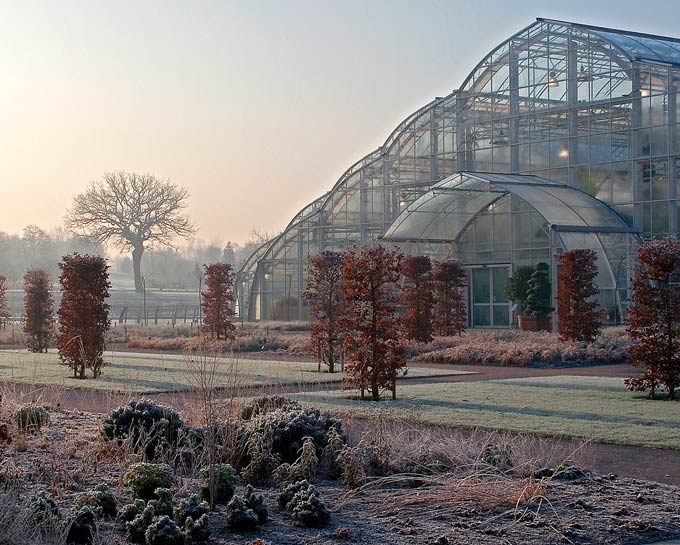
MIDWINTER ENCHANTMENT [December – February]
At RHS Wisley, the Royal Horticultural Society’s flagship garden in Surrey, the winter months have an ethereal, contemplative quality. On a frosty day head to Seven Acres to see willow and dogwood stems reflected in the lake, and duck and rabbit footprints criss-crossing the frosty lawns. At the Glasshouse Borders, a Piet Oudolf design of perennials and grasses is a mass of seedpods and seed heads intact until March, when they are cut back.
Far from being flowerless in winter, on New Year’s Day Wisley will have more than 250 plants in bloom, ranging from heathers and hellebores to early flowering camellias. Deliciously scented viburnums, mahonias, witchhazels, shrubby honeysuckles and daphnes lift the spirits too.
Steeped in 400 years of history, and with the River Witham flowing through the estate, Easton Walled Gardens in Lincolnshire is a restoration success story. In 2001, having been abandoned for 50 years, the 12-acre garden was so overgrown it was impenetrable. Enter Lady Ursula Cholmeley and a host of volunteers who spent 18 months clearing it in preparation for a full-scale revival that now includes rose meadows, a white garden, and a ‘pickery’ for cut flowers.
Easton’s year starts with Snowdrop Week in mid February. ‘As the harsh winter gives way to spring, a picturesque white carpet rolls out across the gardens, with thousands of delicate snowdrops emerging from the thawing earth,’ says Lady Cholmeley. Expert plantswoman Jackie Murray holds talks throughout the week and shows off rare and unusual varieties such as galanthus ‘Mighty Atom’ and ‘Wendy’s Gold’.
Close to the university city of Cambridge, Anglesey Abbey’s 114-acre landscape garden was developed by Lord Fairhaven and is now run by the National Trust. ‘The garden is at its most exciting during winter,’ says head gardener Richard Todd. ‘There’s a long period of interest created by stem and leaf colour, bark texture, and fragrant flowering shrubs.’
Along with a five-week snowdrop festival from the last week of January, there is a dedicated winter garden to wander through. A path runs through the middle of the 450-metre long garden and to each side are stands of dogwood – scarlet ‘Westonbirt’, orange ‘Midwinter Fire’ – planted next to colourful willows, winter flowering cherry trees, contorted hazel, viburnum and witch hazel. The finale is a ghostly grove of silver birch. A Winter Lights Festival during December invites visitors to enjoy the garden at night, and to warm up afterwards with mulled wine and a hog roast.
*Pashley Manor (www.pashleymanorgardens.com) opens from 30March to 28 Sept, on Tues, Weds, Thurs and Sat, 11am to 5pm, entry during the Tulip Festival £9.50. *Exbury Gardens (www.exbury.co.uk) is open from 9 March to 3 Nov, daily, 10am to 5pm, entry from £11. *Glendurgan (www.nationaltrust.org.uk) is open from 11 Feb to 13 Nov, Tues to Sat, 10.30 to 5.30pm, entry £7.50. *The Garden House (www.thegardenhouse.org.uk) opens daily from 1 March to 3 Nov, 10.30am to 5pm, entry £7.30.*Audley End gardens (www.english-heritage.org.uk) open throughout the year – check website for details, entry £13. *Penshurst Place (www.penshurstplace.com) opens daily from 29 March to 3 November, 10.30am to 6pm, entry from £8. *Sussex Prairies (www.sussexprairies.co.uk) is open daily from 1 June to 13 October, 1pm to 5pm, entry £6. *Batsford Arboretum (www.batsarb.co.uk), opens daily (except Christmas day), 10am to 4.45pm, entry £7. *Holehird Gardens (www.holehirdgardens.org.uk), open daily from dawn until dusk, entry free but donations welcome. *RHS Wisley (www.rhs.org.uk/gardens/wisley) open daily (except Christmas day), check website for opening times, entry from £10.50. *Easton Walled Gardens (www.eastonwalledgardens.co.uk), opens from 16 to 24 February for Snowdrop Week, then from 3 March to end Oct, on Weds to Sun and Bank Holiday Mondays, 11am to 4pm, entry £6.50. *Anglesey Abbey (www.nationaltrust.org.uk/anglesey-abbey) opens daily (except 24 to 26 December), 10.30am to 4.30pm, entry from £6.55.
Related articlesThe Garden of England |
Click here to subscribe! |



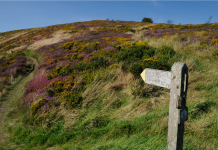
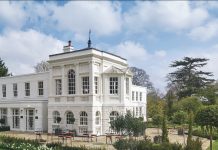

 © 2024
© 2024